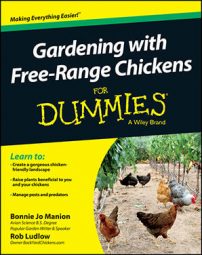Typically, hardscape comes in many common materials, such as concrete, concrete pavers, stone, decomposed granite, bricks, and wood decking. Choosing exactly what type of hardscape to use in your garden with your free-range chickens depends on your landscape setting, your budget, and how handy you are.
Many of these hardscape materials have permeable qualities that advantageously allow rain and water drainage to seep into the ground rather than run off. These permeable materials also allow water to reach tree roots and dissipate excess rain or water runoff before causing problems.
Concrete
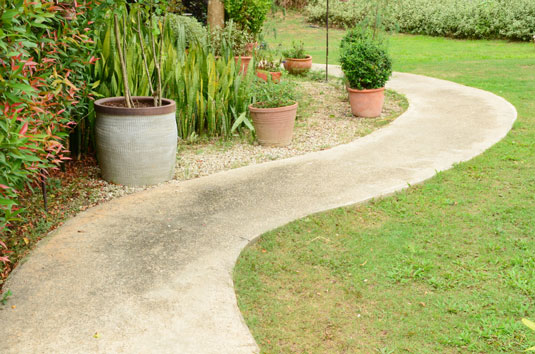
Concrete has experienced a rebirth in recent years as a design medium, inside the home, as well as outside in the landscape. Concrete is equally trendy and popular in the garden as a hardscape element. Anything goes; it doesn’t have to be basic concrete.
You cannot only customize the shape, color, and texture you desire, but also personalize it by molding objects and memorabilia in it. Customizing a concrete wall or path is as simple as adding great flea market finds, such as old tools and vintage water faucet handles, into your wet concrete before it dries.
Concrete doesn’t have the best permeable qualities, and in natural light colors can show rust and other marks from outdoor furniture or pots. Chickens walk on concrete, but they don’t stay long, because they prefer scratching in the dirt and foraging for food. Concrete can be hot to walk on in the summer; this heat further discourages chickens.
Concrete pros and cons: Concrete is economical, and it’s a great medium to design with. Concrete can crack and break up in extreme weather conditions. Concrete holds heat.
Concrete pavers
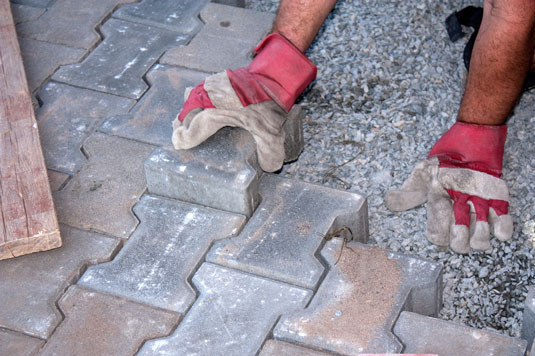
A more flexible variation of concrete is pavers. Concrete pavers are simply smaller pieces of pre-cast concrete that are usually interlocked and placed on a level compact sub-base. Pavers come in many colors, and you can use them to create many designs.
Because of the design factor, pavers create a more formal look. Pavers aren’t held together with grout, but with a fine layer of sand. This layer of sand allows for more flexibility with rain runoff and potential earthquake movement. And you have the added benefit of expanding and contracting properties with fluctuating temperatures.
Some of the more common uses for pavers are driveways, pathways, and heavy foot traffic areas like building entrances, around pools and fountains, and patios. Typically, you don’t want your chickens roaming in these areas, and chickens react to concrete pavers the same way they react to concrete.
Concrete pavers pros and cons: Concrete pavers are a more formal style than traditional concrete. They have an attractive design or pattern and have more environmental flexibility thanks to their interlocking pieces. Concrete pavers can be used in small areas, and they take high traffic easily. Concrete pavers can be costly in labor, materials, and design.
Stone
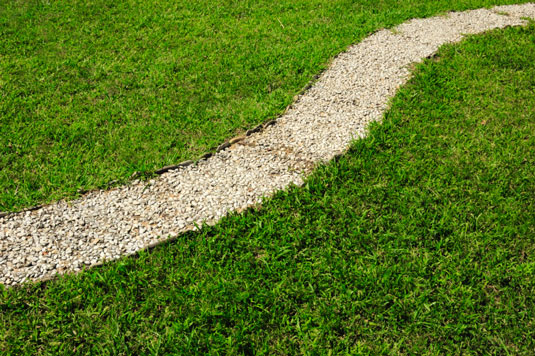
Stone is a large, vastly diversified category. Generally speaking, the cost of stone is determined by its origin, weight, and freight cost. Stone types can vary regionally, but are readily shipped all over the country. Stone comes in many sizes, colors, textures, and prices.
Chickens can walk on stone easily. Although stone is a permeable material, chicken manure takes a long time to break down, and it is best to scoop or pick up after your chickens, especially if stone is a pathway or high traffic area.
Stone pros and cons: You can find a stone for virtually every type of landscape and style. Stone is timeless in a landscape. Stone isn’t a smooth surface, and can shift under weight. Stone can be very costly.
Decomposed granite
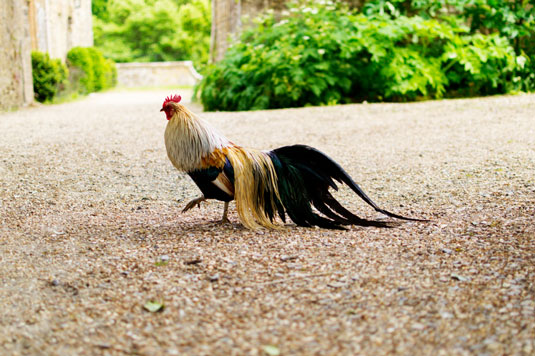
Decomposed granite, or DG, is also stone. DG has become a very popular permeable, low maintenance material to use for high traffic areas. Decomposed granite is made up of 3/8″ pebbles and fine granite dust. DG is usually associated with a compacted under base. Also available in many colors, it’s a nice material to use in a path or driveway.
Like pea gravel, DG can be raked or blown with a lawn blower. Small amounts of chicken manure left on DG will eventually break down and disappear over time, if you don’t scoop them up first.
Decomposed granite pros and cons: DG is a nice surface for pathways and driveways. DG is made up of fine grit that’s very agreeable to chickens. DG can be costly to install, because it needs a compacted under base, and typically borders or edges. DG has to be replenished from time to time.
Brick
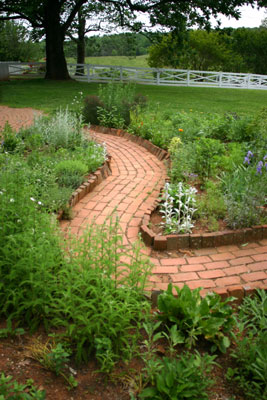
Brick is a nice material for a pathway or patio. Sometimes you can find vintage bricks from old buildings to create a worn but welcoming look. Brick can be washed down easily with a hose or sprayer, if your chickens happen to meander on your brick path or patio. Bricks, like DG, require care to get a good level base. If not properly installed, bricks have a tendency to sink and become uneven. Bricks are usually held together with concrete.
Brick pros and cons: Bricks are versatile and can be used for walls, walkways, patios, edging, and buildings. If you’re using brick, make sure you have enough to cover your project, because finding the same brick may be hard to match. Bricks can crack and spilt in extreme weather conditions. If you’re using brick as one of your hardscape materials in your landscape design, hire a professional bricklayer to get it right the first time.
Decking
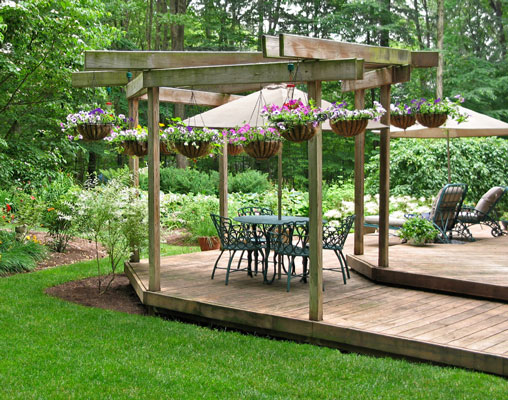
Decking is a wonderful addition to a garden landscape. Decking is usually made up of a hardwood material that can stand up to the elements either left to weather, or protected with an oil, sealant or even paint. Most wood decking is absorbent to chicken manure, and not always that easy to clean.
Generally speaking, decking isn’t a place for your chickens. Keep chickens away from your patios and eating areas and do not feed chickens treats around your food preparation and eating areas. Chickens can pick up bad begging habits, just like a dog that begs by the dinner table. A raised deck with steps, thick landscape, or even low fencing may discourage chickens and keep them off of your deck.
Decking pros and cons: Decks are a great hardscape element to define a large social and relaxing space. Decks can be costly when you add up initial materials, design, labor, and maintenance.

